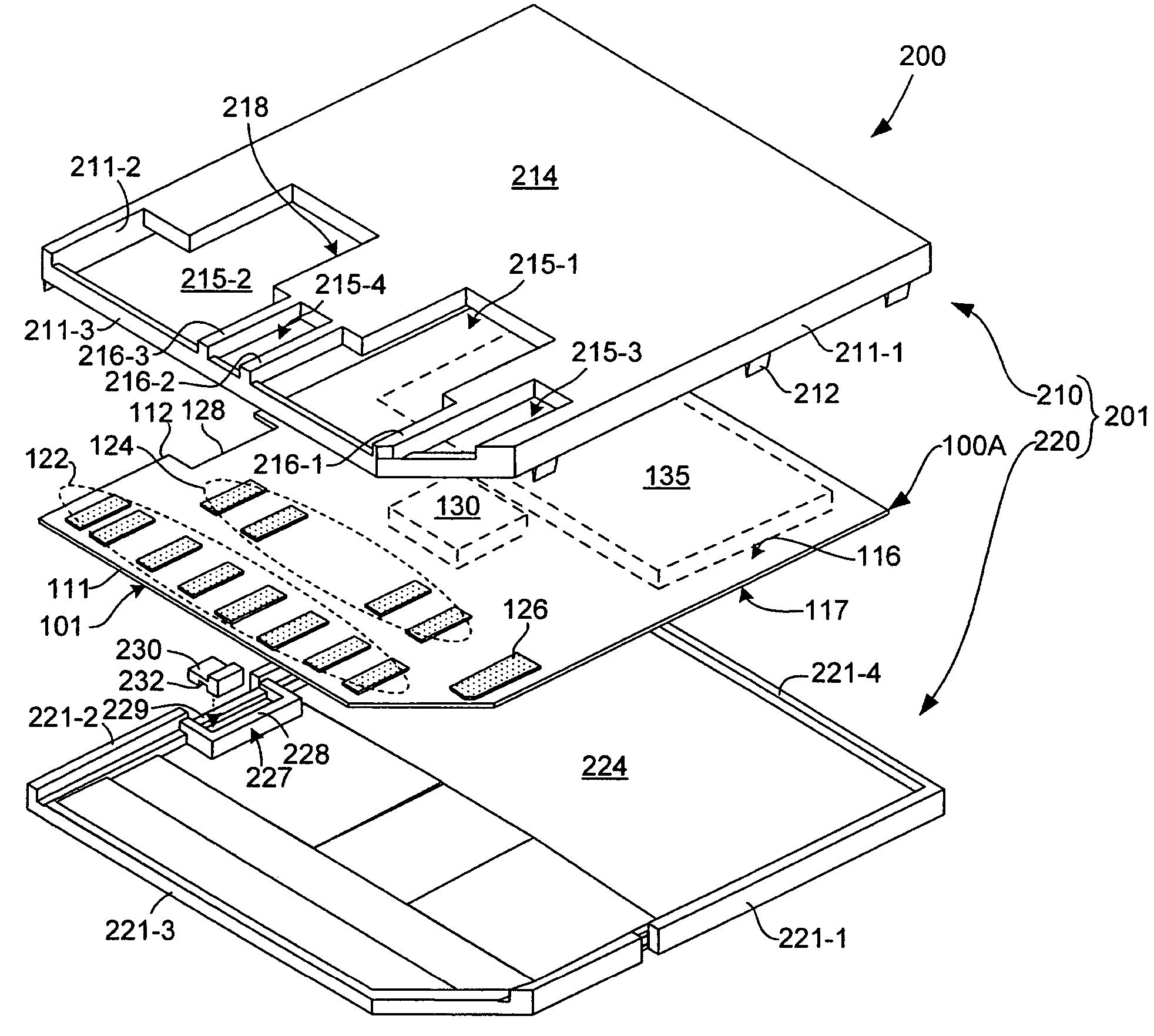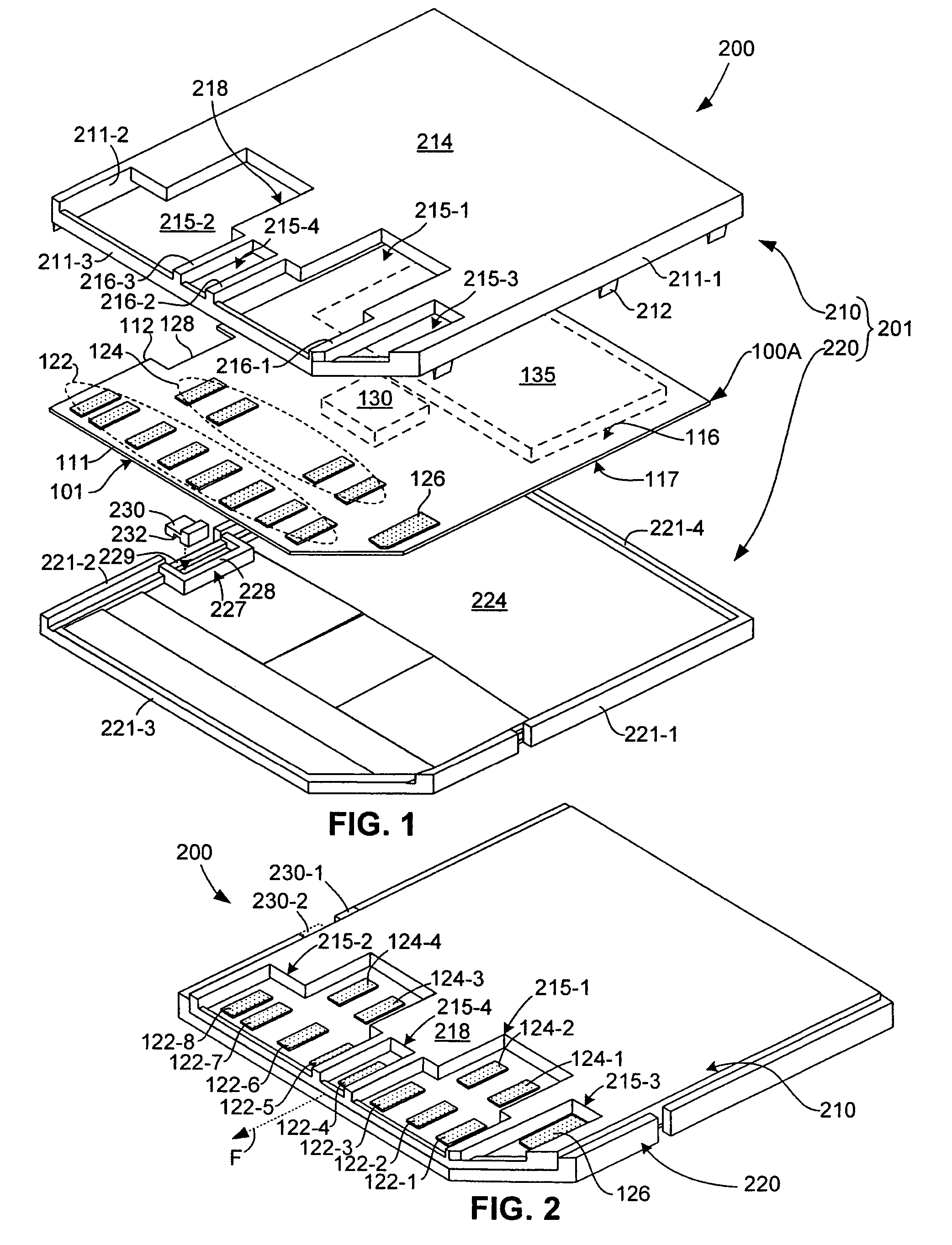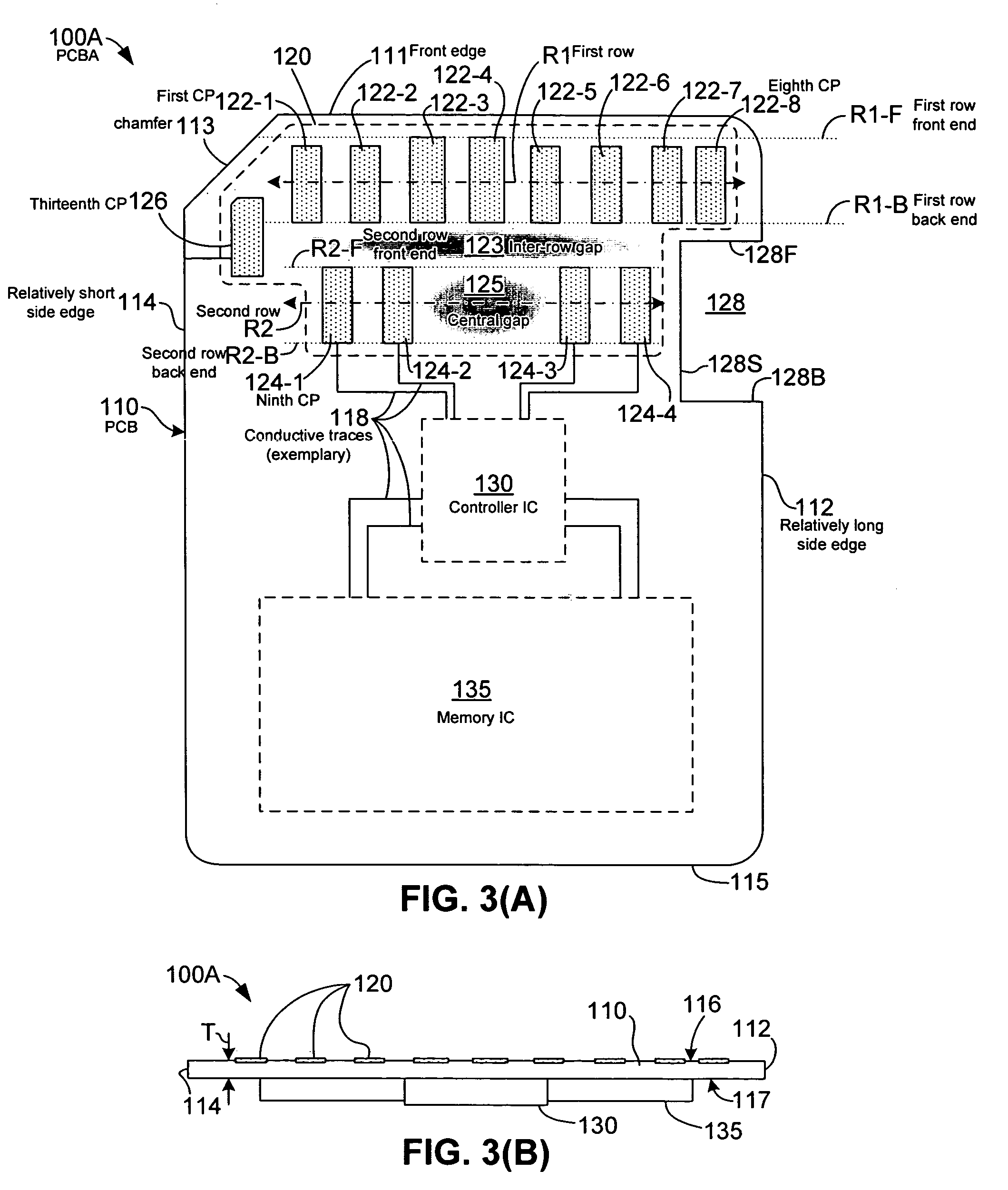Combination SD/MMC flash memory card with thirteen contact pads
a technology of contact pads and memory cards, which is applied in the direction of printed circuits, programmable/customizable/modifiable circuits, instruments, etc., can solve the problems of sd cards, inability to fit in mmc slots, etc., and achieve the effect of convenient and inexpensive production and efficient integrated sd/mmc host systems
- Summary
- Abstract
- Description
- Claims
- Application Information
AI Technical Summary
Benefits of technology
Problems solved by technology
Method used
Image
Examples
Embodiment Construction
[0025]FIGS. 1 and 2 are exploded perspective and assembled perspective views, respectively, showing a 13-pad memory card 200 according to an exemplary embodiment of the present invention. Memory card 200 generally includes a printed circuit board assembly (PCBA) 100A and a two-part housing 201 including an upper cover 210 and a lower cover 220 that are mounted over PCBA 100A in the manner shown in FIG. 2.
[0026]According to an aspect of the present invention, PCBA 100A is constructed in a manner that is consistent with MMC Specification Version 4.0 mechanical form factors, which were announced by MultiMediaCard (MMC) Association (www.mmca.org) in February 2004, and housing 201 is constructed in a manner that is consistent with mechanical form factors established by SD Card Association (www.sdcard.org). In particular, PCBA 100A includes thirteen contact pads arranged in a pattern consistent with MMC Specification Version 4.0, and housing 201 is formed with dimensions that comply with ...
PUM
 Login to View More
Login to View More Abstract
Description
Claims
Application Information
 Login to View More
Login to View More - R&D
- Intellectual Property
- Life Sciences
- Materials
- Tech Scout
- Unparalleled Data Quality
- Higher Quality Content
- 60% Fewer Hallucinations
Browse by: Latest US Patents, China's latest patents, Technical Efficacy Thesaurus, Application Domain, Technology Topic, Popular Technical Reports.
© 2025 PatSnap. All rights reserved.Legal|Privacy policy|Modern Slavery Act Transparency Statement|Sitemap|About US| Contact US: help@patsnap.com



